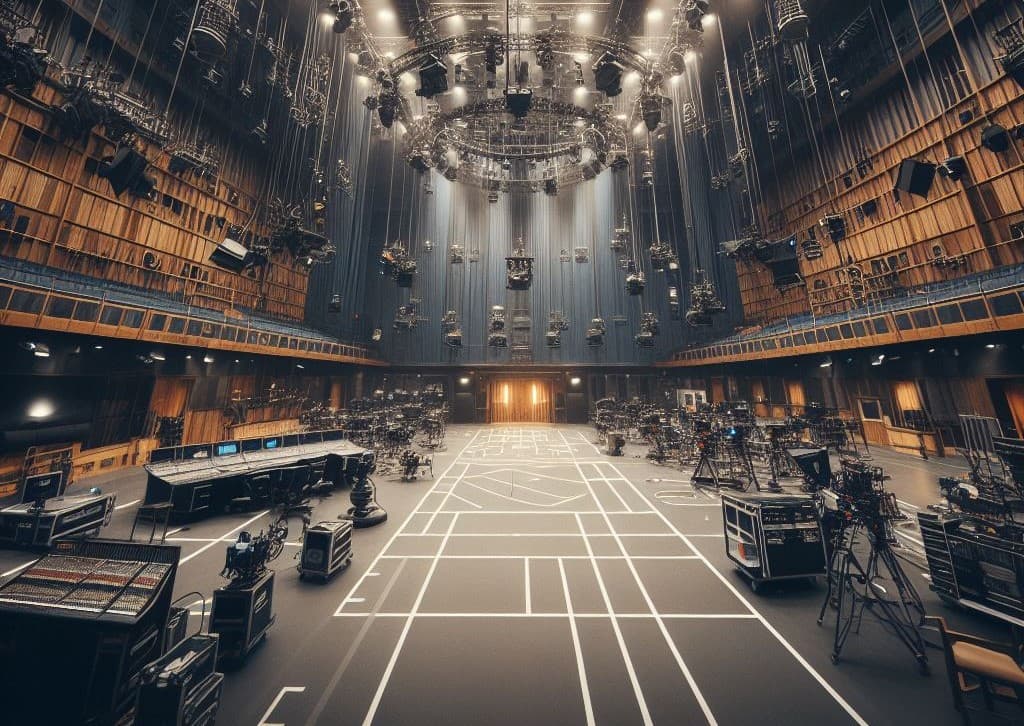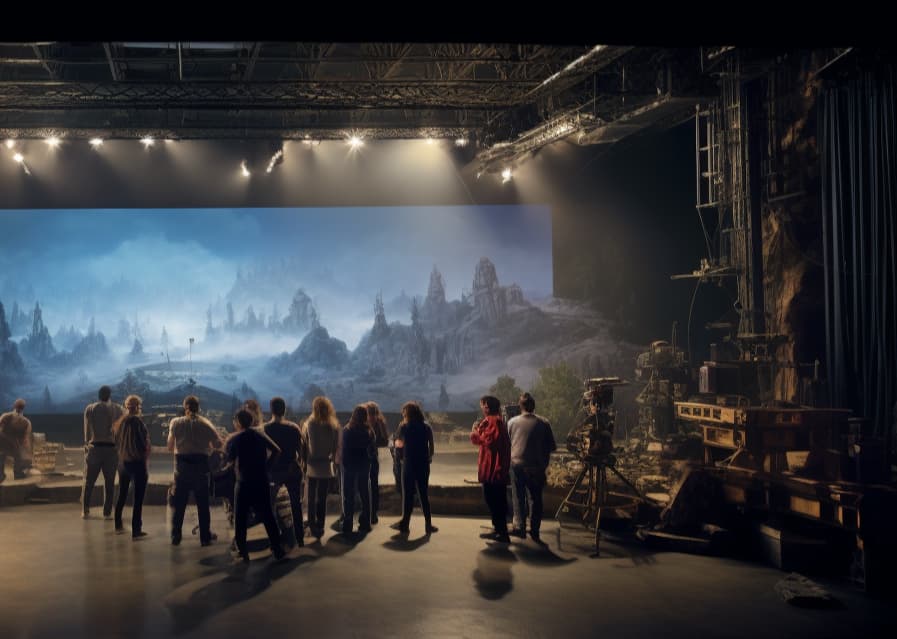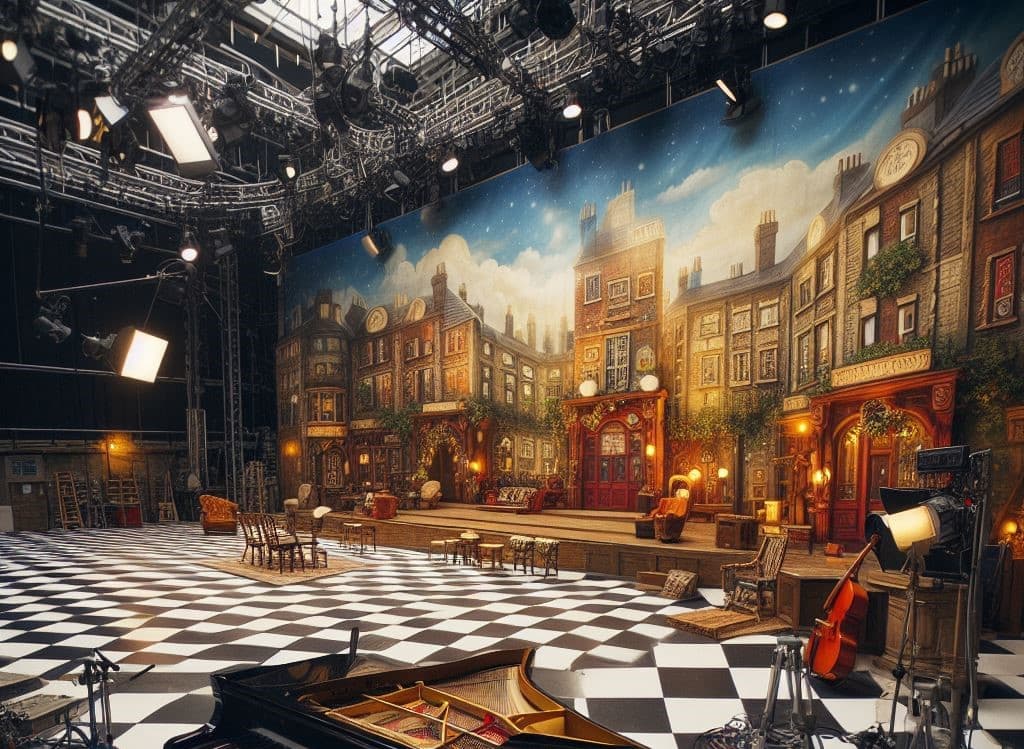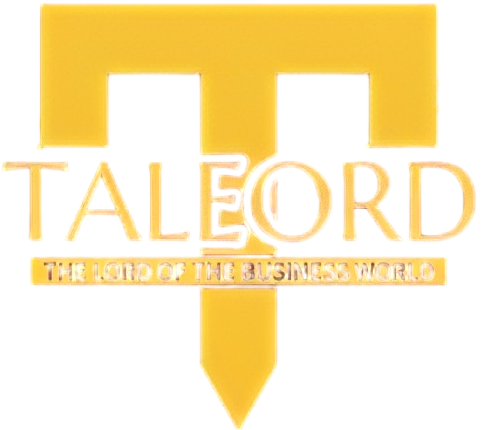Stepping Into Controlled Cinematic Chaos
Whether you’re a die-hard movie buff or casual TV watcher, chances are you’ve experienced stories brought to life within the carefully constructed world of a soundstage. But what exactly goes on behind those soundproof walls to transform bare rooms into fully-realized sets? As a soundstage veteran of 15 years, I’m here to give you an exclusive insider’s look at how we create cinematic magic.
From elaborate period pieces to out-of-this-world sci-fi adventures, soundstages provide filmmakers a safe space to craft any environment imaginable. Within these specialized studios, directors and crews wield lighting, set design, visual effects and more to transport audiences anywhere on screen. It’s a complex dance of coordination, but also creative freedom. So pull up a seat and get comfortable as I take you on a tour behind the scenes.
A Brief History of Controlled Chaos
The concept of the soundstage dates back to Hollywood’s early days of experimentation with synchronized sound in the late 1920s. Pioneering studios like Warner Bros. constructed the first large, soundproofed stages to accommodate recording dialogue without outside noise interference. This allowed the blossoming “talkies” genre to truly take off.
In following decades, even larger stages arose, like those at famous studios like Paramount. Iconic shows from I Love Lucy to The Honeymooners utilized these spaces to great comedic effect. Then through the 1970s-80s, special effects and green screen technology sparked another construction boom. Filmmakers could now realize even more imaginative worlds within the controlled chaos of soundstages.
Flash forward to today, and the technology may be more advanced. But the core function remains the same – to provide any production a controlled environment where visual magic can unfold. Modern stages even utilize virtual cameras and LED walls to push boundaries further. The possibilities are endless, and it’s our job to make audiences believe.
Your Guided Tour of Cinematic Wizardry

Now that you know a bit of the backdrop, are you ready to step inside? First things first, put some comfortable shoes on. You’ll be doing a lot of walking! Our main stage measures a massive 30,000 square feet, so it can accommodate everything from intimate living rooms to sprawling fantasy landscapes.
We’ll start our tour over in the lighting grid. Wave to the operators high above as they work diligently to craft just the right mood. An entire rainbow of hues is at their fingertips, whether for a natural sunrise or otherworldly alien terrain. It’s magic in motion as they choreograph beams around sets below.
Speaking of sets, let me show you one of my personal favorites – the replica of Diagon Alley from Harry Potter. Artisans spent months crafting every storefront down to the smallest charm. I never get tired of strolling through and discovering new details. Nearby sits a sleek starship bridge set for our latest sci-fi epic. The level of immersive realism always blows me away.
As we continue our walk, you’ll notice various green and blue screens lining the walls. These allow visual effects wizards to later insert virtual backdrops or characters. We’ll also pass motion capture stages where actors bring fantastical creatures to life through performance. The creativity on display is truly awe-inspiring.
Before you know it, we’ve circled the entire space! But our tour isn’t over yet. Let’s head to the lounge area and I’ll tell you more industry secrets over a well-deserved coffee. Sound good? Then follow me – the magic’s not over yet.
Behind-the-Scenes Business of Magic
So as much fun as set visits are, the soundstage is ultimately a business. Major studios own their own, but also rent space to outside productions. Scheduling can get tricky juggling multiple projects at once across various stages. It takes a masterful juggling act by our production managers.
Budgeting also plays a key role in any operation. A big blockbuster might spend millions constructing their world, while indies must get creative on a shoestring. Either way, it’s an investment that has to turn a profit. That’s where talented carpenters, painters, electricians and more come in to stretch every dollar.
Marketing is another vital revenue stream. Fans flock from around the world just for guided lot tours. Special exhibit openings or conventions provide additional income sources. It’s amazing what a well-placed product placement can fund too!
So while the glamour of above-the-line creatives gets attention, it’s really the behind-the-scenes business minds that keep the magic factory running. From number-crunching to scheduling, they perform their own kind of alchemy to sustain this multi-billion dollar industry. It might not be as flashy, but it’s what allows the real magic to happen.
Modern Marvels – Pushing Boundaries for New Worlds
Of course, technology continues to rapidly evolve the soundstage experience as well. State-of-the-art LED walls are becoming more prevalent, allowing for virtual sets and locations. Combined with motion capture, it’s like being inside a living video game. Directors can even “film” with a virtual camera for a seamless blend of practical and digital elements.
Advanced lighting systems powered by intelligent networks bring unprecedented control. Now with a few taps, lighting designers can store and recall an infinite number of cues to set any mood. Automated rigging moves fixtures fluidly through the grid without manual flymen. It’s taking the lighting game to a whole new level.
5G and fiber optic infrastructure mean massive data can stream seamlessly between all departments. Visualization software maps out intricate plans, while augmented and virtual reality tools provide immersive previsualization. Real-time rendering and compositing further blurs lines between the real and the imaginary.
As technology evolves, so do the possibilities for storytelling. Soundstages are unlocking new frontiers to realize ever more imaginative worlds. The future is bright for pushing the boundaries of cinematic language and transporting audiences like never before. Exciting times ahead indeed!
Expanding the Creative Canvas

Of course, it’s not all high-tech wizardry. Low-tech solutions still have their place too in the soundstage toolbox. Green screens allow sets and locations to be suggested, not fully constructed – saving both time and money. Miniatures provide sweeping establishing shots of landscapes too vast to build at full scale.
Practical effects like pyrotechnics and rigged props also enhance the realism that CGI sometimes lacks. A well-timed puff of smoke or a shattering glass sells the illusion. It’s all about knowing when technology enhances or detracts from the storytelling.
The multi-purpose nature of soundstages further expands the creative canvas. From rehearsals to recording music and foley tracks, every part of production has a dedicated space. Live events, awards shows and concerts also utilize these versatile studios.
Educational programs introduce new generations to the filmmaking process. Students gain hands-on experience of the technical and collaborative skills required. It helps sustain this innovative industry and passes the torch of creativity.
So whether it’s the latest tech marvel or a tried-and-true technique, soundstages empower visual storytellers with every tool. The best work seamlessly combines it all to transport audiences to new worlds. It’s this spirit of innovation and collaboration that keeps the movie magic alive.
bilities are endless within these hallowed halls. Now go – and let your own cinematic dreams run wild!
The Evolution of Soundstage Design
As the technology and techniques of filmmaking have advanced, so too have the design and layout of soundstages evolved to better serve the needs of each new era. Let’s explore some of the key changes in soundstage design over the decades:
The Early Years (1920s-1940s)
The first soundstages of the silent film era were relatively simple, open floorplans with basic lighting grids. But once “talkies” emerged, studios had to quickly find ways to contain noise on ever-larger sets. Walls rose around perimeter stages, with insulated materials like brick, concrete and plaster used.
Early experimentation led to innovations. Boom microphones allowed greater actor mobility than lavalier mics. Overhead lights provided balanced illumination across sets. Stage sizes also grew exponentially to house epics like Gone with the Wind.
Golden Age Improvements (1940s-1960s)
Larger budgets during Hollywood’s Golden Age enabled more sophisticated stage designs. Hangars were constructed to house entire aircraft. Under-grid rigging systems installed overhead lights, scenery and cameras in precise positions.
Enhanced ventilation and climate control created more comfortable working conditions. New sound-absorbent materials further dampened echoes. Stage sizes continued expanding to accommodate widescreen epics like Ben-Hur.
Modern Eras (1960s-Present)
The television boom of the 1960s drove demand for even more stages and new techniques. Modular sets streamlined construction. Grids rose higher to frame vistas. Fiber optic networks laid the groundwork for remote camera systems.
Today’s stages integrate the latest technologies. Advanced lighting and rigging systems are digitally controlled. Green or LED screens replace physical sets. 5G networks enable real-time virtual production. Motion capture redefines live-action filming.
Optimizing the Floorplan

When designing a soundstage, planners aim to optimize workflow and functionality within the space. Here are some key considerations:
Set Placement
Sets are arranged for maximum accessibility and realism of movement. Corridors allow crew to easily navigate between areas. Sets are sectioned off but not so much that the overall space feels cramped.
Grid Access
The grid needs sufficient clearance for lighting, set pieces and camera equipment to be installed and repositioned efficiently. Access points and rigging systems are factored in.
Crew Facilities
Dedicated spaces are included for make-up, wardrobe, video village, craft services, safety equipment, green rooms, production offices and more. Locations are chosen for convenience.
Load-In Areas
Areas are designated at stage doors and loading docks for easy ingress and egress of large set pieces, equipment and vehicles. Traffic flow is optimized.
Ensuring Optimal Conditions
With so many moving parts, soundstages demand meticulous environmental, safety and structural standards:
Acoustics Treatment
Walls, floors, ceilings use sound-absorbing materials like fiberglass, rockwool and acoustic panels to prevent echoing and maintain audio clarity on set.
Climate Control
HVAC systems circulate temperature-regulated air to keep sets, equipment and crew comfortable year-round in all weather conditions. Humidity is regulated.
Fire Suppression
An automatic sprinkler system equipped with smoke detectors helps ensure set safety during pyrotechnic or welding scenes involving open flames or sparks.
Structural Integrity
Stages are built with load-bearing steel beams, concrete foundations and wind bracing to withstand heavy production equipment, set pieces and weather over decades of use.
From their earliest iterations to the cutting-edge designs of today, soundstages have continually advanced to fuel creative storytelling at Hollywood’s frontiers. Their optimized, high-tech facilities are a key driver of the modern entertainment industry.
In Summary
As production technologies continue to rapidly evolve, soundstages are at the forefront of innovation. Virtual production techniques now allow entire digital environments to replace physical sets. Combined with motion capture and real-time rendering, directors are gifted visual storytelling possibilities that were impossible even a few years ago. Soundstages will undoubtedly remain the backbone of visual media for decades to come as the entertainment industry pushes creative boundaries. They provide a stable production infrastructure that empowers storytellers to fulfill their boldest visions.
Frequently Asked Questions

What is the average size of a soundstage?
Soundstage sizes can vary greatly depending on the needs of productions and space available at each studio lot. Most average between 15,000-30,000 square feet to accommodate full-scale interior and exterior sets. Some larger stages approach 50,000 sq ft for blockbuster productions.
How thick are soundstage walls?
Walls are typically constructed with layers of different soundproofing materials. The most common configuration is 8-12 inches of concrete sandwiched between two layers of drywall. This provides STC (sound transmission class) ratings of 50-60 to block noise bleed between stages.
What is the maximum load capacity of a soundstage grid?
Most modern stage grids are engineered to safely support loads of at least 50 pounds per square foot. Some larger grids at major studios can hold over 100 lbs/sq ft, allowing for complex rigging of lighting, sets, and camera equipment overhead.
How many soundstages does a major studio have?
The largest studios like Warner Bros., Universal and Paramount each have 30-50 soundstages on their lots, with stage sizes varying greatly. Some independent rental facilities like Manhattan Beach Studios in LA contain over 20 stages to serve external productions.
What lighting instruments are commonly used on soundstages?
The most frequent fixtures are LED panels, tungsten Fresnels, ARRI SkyPanels, Mole-Richardson HMIs, and Lowel Tota-Lights for versatile soft to hard lighting. Digital lighting control via DMX allows remote operation from video village.
How are soundstages heated and cooled?
Central HVAC systems precisely regulate air temperature, humidity and air changes via ductwork in ceilings and under floors. Large rooftop units contain boilers, chillers, air handlers and fans to maintain a consistent 72°F environment.
What materials are used to soundproof soundstages?
Common acoustic treatments include fiberglass insulation, mineral wool, gypsum board, acoustical sealants and mass-loaded vinyl barriers. These help achieve high STC ratings by absorbing, blocking and decoupling sound transmission through walls, floors and ceilings.
How do soundstages handle fire safety compliance?
Automatic sprinkler systems are installed with smoke/heat detectors. Fireproof building materials are used in construction. Fire extinguishers, emergency exits and muster points are clearly marked. Regular inspections ensure compliance with strict film production safety codes.
Can soundstages be rented out for events?
Yes, many independent soundstage facilities offer rental of their large, versatile spaces suitable for concerts, product launches, awards shows, and other live experiences. Rentals help offset costs between film/TV production schedules.
What is the lifespan of a soundstage building?
With proper maintenance, a soundstage structure can remain fully operational for 50-100 years before requiring major renovations. Some of the oldest stages still in use date back to the 1920s-30s Golden Age of Hollywood. Regular upgrades keep them state-of-the-art.
How do virtual production techniques utilize soundstages?
LED volume stages with in-camera visual effects allow filmmakers to replace physical sets with digital environments. Real-time game engine software displayed on walls creates fully-immersive virtual production worlds on soundstages.
What safety precautions are in place on soundstages?
Stages enforce fall protection, rigging safety, confined space entry, hazardous materials handling and fire prevention protocols. First aid stations, eyewash stations and emergency showers are provided. Regular safety training and equipment inspections help protect crew health and wellness.
How do soundstages benefit the entertainment industry?
By offering controlled, versatile production environments, soundstages are essential for visual effects, stunt work, complex lighting/rigging and filming logistically challenging scenes. This helps Hollywood studios and independent producers complete ambitious projects on schedule and on budget.
We also have interesting and useful content like this article on our website that you will definitely be interested in viewing

Stepping Out Into a Bright Future
Well, I hope you’ve enjoyed this exclusive behind-the-curtains look at how soundstages weave their magic. It’s been a pleasure giving you a glimpse into my world. As technology and tastes evolve, so too will the ways we craft immersive experiences. Rest assured, creative problem-solvers will continue rising to every new challenge.
Outside these walls lies a bright future, with audiences craving diverse stories told through cutting-edge mediums. Soundstages are poised to answer that call, arming visionary storytellers with powerful tools. It’s an exciting time to push boundaries and forge new paths in visual storytelling. As for me, I can’t wait to see what worlds I’ll help bring to life next.
Thank you for joining me on this tour. I hope you now have a new appreciation for the controlled chaos behind the silver screen. Where will your imagination take you next? The possibilities are endless within these hallowed halls. Now go – and let your own cinematic dreams run wild!

